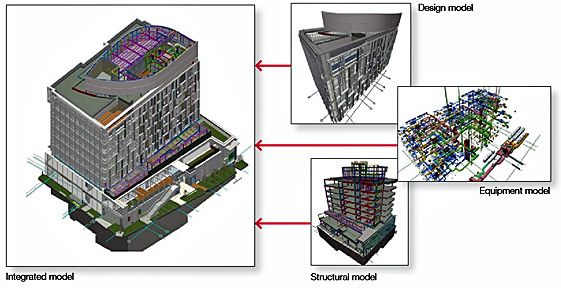Building Information Modeling (BIM)
BIM is the use on a construction project of three-dimensional computer models that include not only two-dimensional data on building shape, like that of conventional drawings, but also data on specifications such as the type and performance of materials, enabling those involved to better visualize the project.
Image of information integrated in BIM

Ability to visualize enables parties to form consensus from an early stage
Use of three-dimensional modeling makes it easy for the parties involved to visualize the finished product and all the processes, from planning, design, and construction management to operation and maintenance. This promotes information sharing and mutual understanding between the interested parties, and enables clients, architects, and builders to form a consensus at an early stage.
Ability to visualize enhances quality management
Use of BIM incorporating design, structure and equipment allows for pre-construction interference checks to find and resolve conflicts, thereby contributing to smooth progress in construction and a quality product.
Centralization of building information facilitates operation and maintenance
BIM allows for centralization and integration of building information. BIM aids in considering layout changes and planning renovation work. As it can also incorporate the building's construction and renovation history as well as information on fixtures, the formerly complex task of building management should become somewhat simpler.

